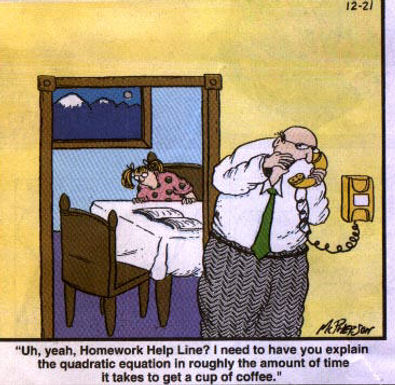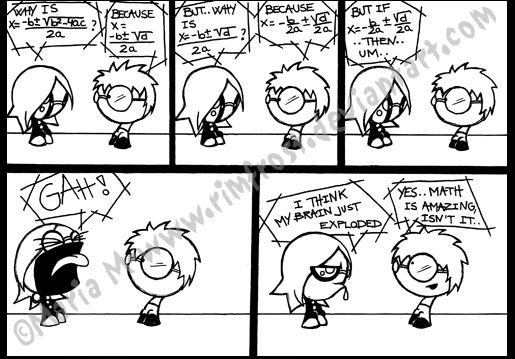

QUADRATICS
Learn. Analyze. Grow.
Its easy as 123!
Quadractic Connections
There are many significant connections revealed throughout the unit of quadratics. Some of those connections include equations and graphs, factoring and graphing, and the discriminant and the x-intercepts or zeroes.
Equations and Graphs
Equations and graphs connect significantly. Any of the equations that we learned in this unit gave us an understanding about how the visual representation of the graph will look like:
Vertex form= the value of (-h) and (k) tell us the vertex; that gives the visual of the highest/ lowest point in the graph.
Factored Form= the value of (r) and (s) give us the x-intercepts which displays where on the x axis the graph will be located.
Standrad form=the (c) value gives us the y-intercept which tells us which coordinate the parabola will meet the y-axis.
Also if any of these equations tell us if a is negative or positive, it will represent the parabola facing down or upwards.
Factoring and Graphing
Factoring and graphing go hand in hand with eachother. Without factoring an equation, it would be impossible to graph a parabola if no other information is provided. As explored throughout this website, factoring an equation gives us the x-intercepts. The x-intercepts are crucial to the parabola as they can represent anything on the graph such as:
-
the starting and finishing point
-
the break even point
-
the landing point
Discriminant and X-Intercepts
As discovered through this website, the discriminant is found in the quadratic formula and shows the amount of solutions a problem has. By solutions it means the x-intercepts. The relationship between the discriminant and x-intercepts identifies how the graph will appear as well. For instance, if the discriminant is a positive number, then there will be 2 different zeroes, wheras if the discriminant is negative, there will be no zeroes.


